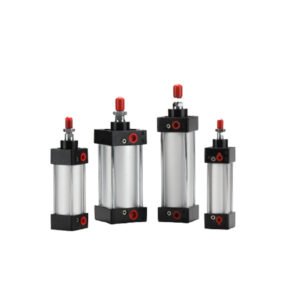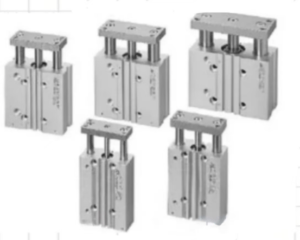Exhaust device: removes the air mixed in the hydraulic cylinder to ensure smooth movement of the hydraulic cylinder, usually installed at the highest part of the hydraulic cylinder.
Working principle
Hydraulic oil enters the hydraulic cylinder through the oil inlet and acts on the piston to push the piston to move, thereby converting hydraulic energy into mechanical energy and realizing mechanical action. According to the different types and structures of hydraulic cylinders, the specific working process varies slightly.
classification

According to the structure: can be divided into piston type, plunger type, sleeve type and rack and pinion type.
According to the mode of movement, it can be divided into linear reciprocating and rotary oscillating.
According to the function form, it can be divided into single-acting type and double-acting type. The single-acting hydraulic cylinder is only stressed on one side and is reset by spring or external force. The double-acting hydraulic cylinder can be stressed on both sides to achieve two-way movement.
According to the installation form: it can be divided into tie rod type, earring type, foot type, hinge shaft type, etc.
feature
Simple structure: It is composed of basic components such as cylinder, piston, and piston rod, making it easy to manufacture and maintain.
Reliable operation: Under normal working conditions, the hydraulic cylinder can operate stably for a long time, with stable output force and speed.
Large output force: Due to the high working pressure of the hydraulic system, the hydraulic cylinder can output a large force, making it suitable for various occasions that require strong driving.
Smooth movement: The incompressibility of hydraulic oil allows the hydraulic cylinder to maintain stability during movement without crawling or shaking.
Web: https://vpneumatic.com
Tex/Fax:0086-577-62840011
WhatsApp:0086-13355775769


